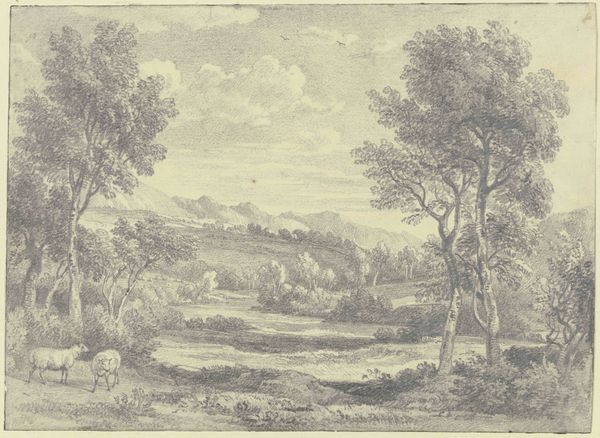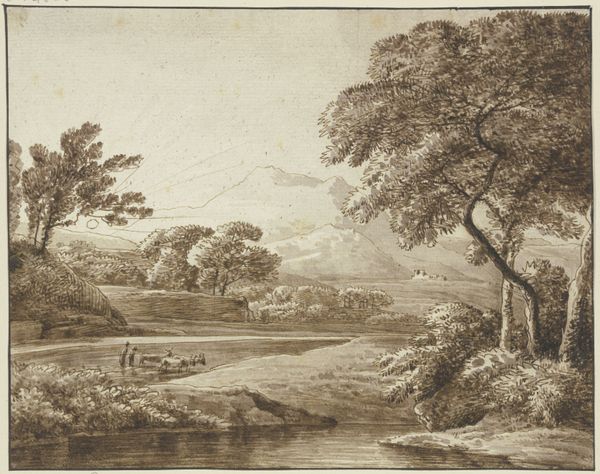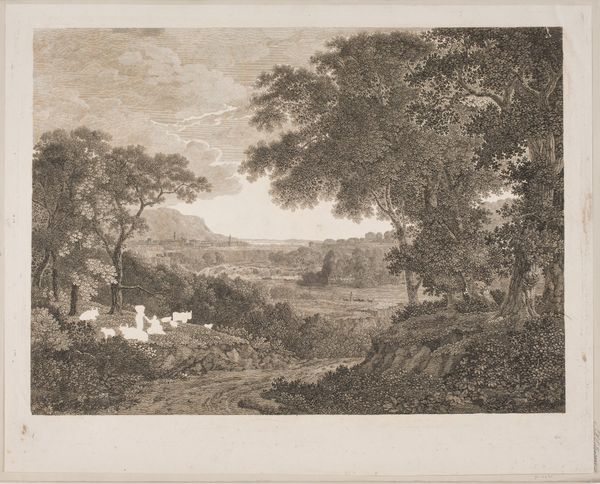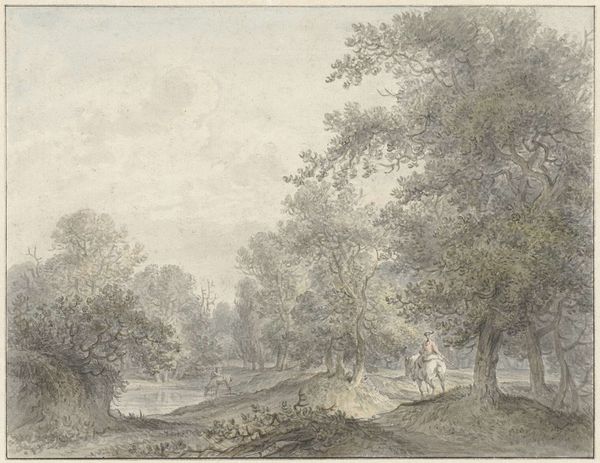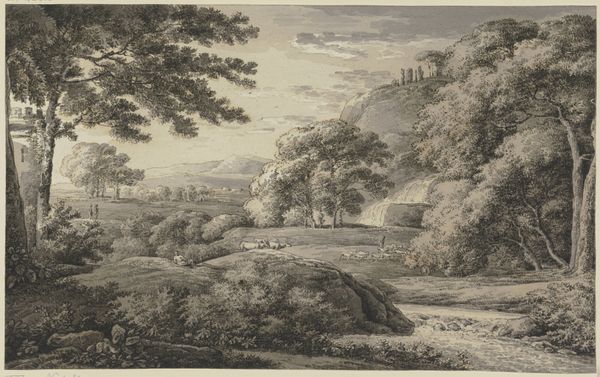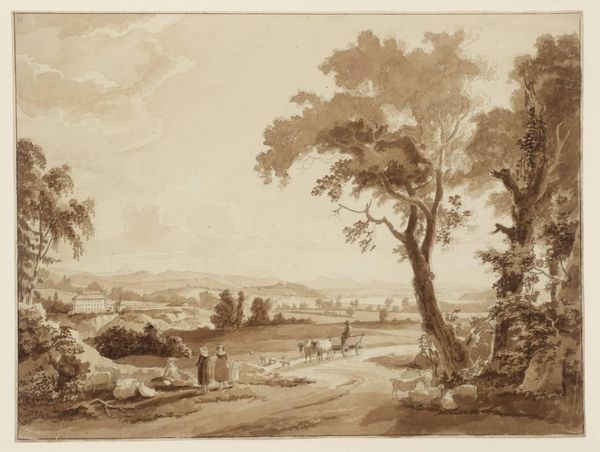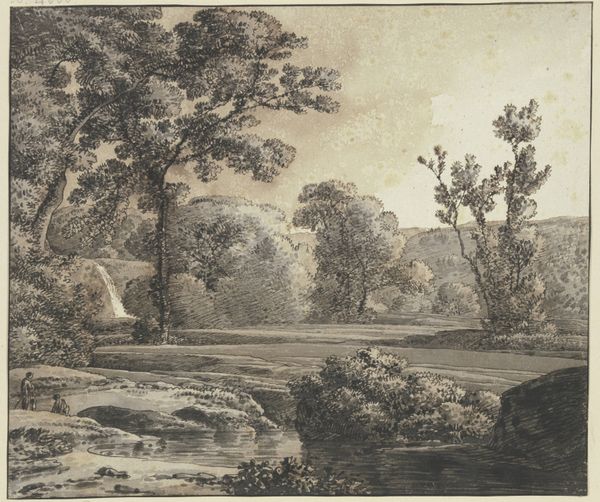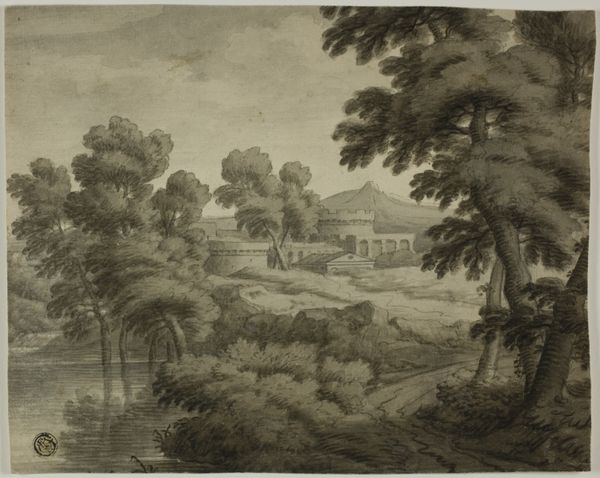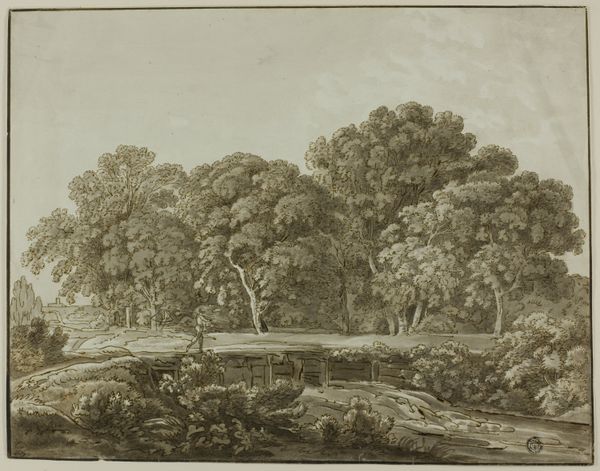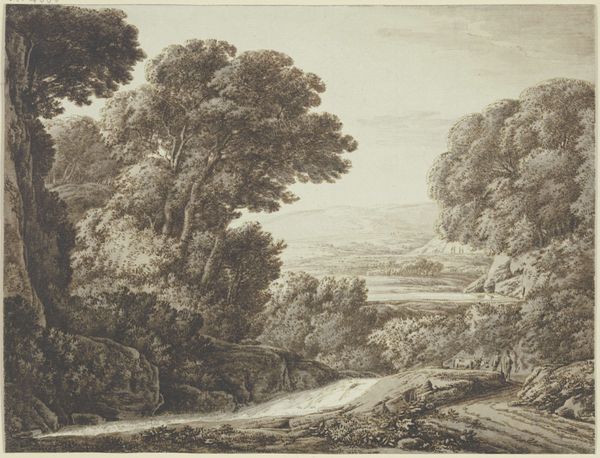
Classical Landscape with Herdsmen in the Foreground 1755 - 1821
0:00
0:00
Dimensions: 14-5/16 x 18-11/16 in. (36.4 x 47.5 cm)
Copyright: Public Domain
Curator: This is Giovanni Battista Lusieri's "Classical Landscape with Herdsmen in the Foreground," created sometime between 1755 and 1821. Lusieri was known for his detailed landscapes. Editor: It has a somber, almost melancholic air. The gray scale feels vast, and even though it depicts a fairly mundane scene, I can't help but see the grand romanticism emerging. Curator: Absolutely, and considering the timeframe, that Romantic sensibility is not accidental. Landscape painting became a powerful tool for expressing national identity and longing. I wonder what kind of ownership the depicted herdsmen might have experienced. Their work sustains this vista. Did they profit from it, or simply occupy space within a broader system that relied upon their invisibility? Editor: Fascinating angle. What strikes me formally is the layering – how Lusieri uses subtle tonal variations to create depth. The trees frame the central space almost cinematically, drawing our eye towards that distant bridge and suggested settlement. The artist directs your eye to a series of framed stages. Curator: Indeed, and it's this direction, or perhaps imposition, that makes me pause. The idealization of rural life, often comes at the expense of the individuals who live that reality. The classical framing—note how the people with the animals are on one side while nature is on the other. Was Lusieri attempting to highlight their separation? The chiaroscuro is so subtle that without intense investigation, a clear, critical examination is hard. The figures fade as the land amplifies. Editor: An interesting observation. For me, it raises the question of light as revelation, the interplay between presence and absence. Think of the implications in structuralist thought; how language hides in plain sight, its deep structures shaping our thoughts even when unacknowledged. We are invited to appreciate light in all its permutations but fail to illuminate lives and stories. Curator: So, is it beautiful and problematic then, an era reflected on a sheet of paper, waiting for the right questions to be asked of it? Editor: Precisely. Perhaps its beauty is precisely in prompting these necessary critical dialogues.
Comments
No comments
Be the first to comment and join the conversation on the ultimate creative platform.


